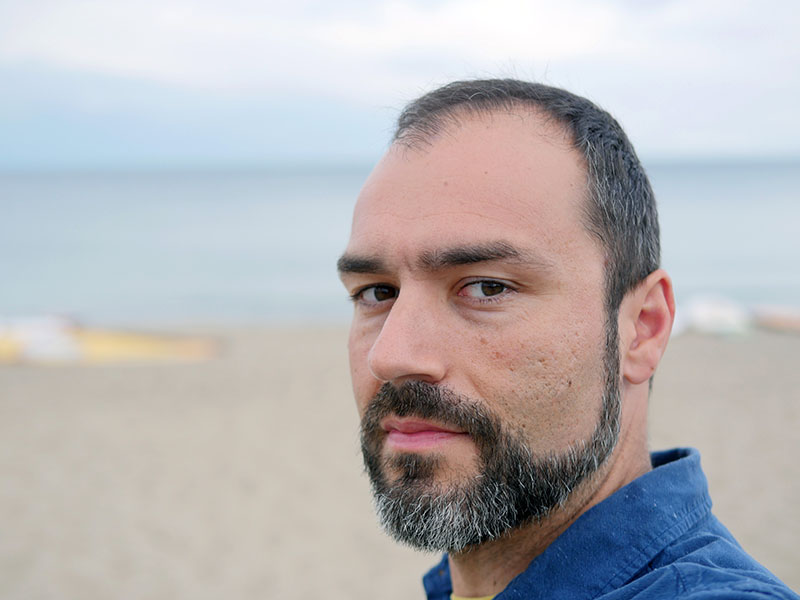It’s through Eduardo Abrantes I have been gaining a vocabulary for talking about sound (which sometimes feels like dancing about architecture, as the saying goes) and understanding it as a method for interacting with conceptualizations of time. During a residency at Copenhagen’s Medical Museion, I was introduced to Eduardo, a sound artist and researcher who had a hand in The Living Room. Created by Martin Grünfeld, this area of the Museion put medical artefacts from the museum’s defunct collections into spaces where bacteria, decay, fungus could also partially “curate”, or at least participate, in the exhibit. These paradigmatic repositioning had me thinking about “cleanliness” and “liveliness” as assumptions in a museum space. The Living Room reminds us nothing is static. (I wrote about my time there in the chapbook RESIDENCE.) Martin suggested Eduardo and I collaborate on some recordings in the room itself. This led to an ongoing conversation about the interaction of sound and poetry that we have sustained through projects that run the gamut from simple, site-specific recordings of my work to collaborative propositions within a field of collective soundings that we have practiced in different spaces and with varying participants. You can hear little bit about my time at the Museion in this recorded talk from 2023 held a few floors above The Living Room.
Currently, we are making a sonic album of Trauma Head with Siren Recordings. Through the adaptation of the “unreadable” marks on the page we’re investigating the position of the patient and of the self who is in a process of “relearning the wor(l)d”. Using only vocal and atmospheric sounds generated through the recording of the text in different locations, Eduardo composes the sonic environment to reflect the speaker’s process of recovery from vertebral artery dissection and stroke. The composition consists of a full reading of the text by me, layered with sonic interventions – from selective binaural spatialization, to sample-based looping, to granular interference. The aim is to create an immersive soundscape that conveys the radical cognitive, temporal, and physical transformations. As a sound art project this piece is also engaged with language as play and is informed by a tradition of poetry as an embodied sonic experience – from ancient lyrical song to contemporary slam poetry performance. The soundscape iteration of this book will be released by Siren Recordings on vinyl and 30 streaming services, which opens possibilities of access for anyone who cannot access traditional print.

Eduardo Abrantes is a Copenhagen-based sound artist and researcher, combining artistic practice with an academic background in philosophy, particularly focused on embodiment and somatic intersections. His work explores the fusion of live art performance—integrating collective movement, voice, improvised interaction, and site-specific acoustic activation—with sound technology like immersive multi-channel installations based on field recordings. Key elements include embodied rhythm, and using voice and listening as platforms for call-and-response. His practice is transdisciplinary and collaborative, involving sound, visual art, dance practitioners, biomedical researchers, biologists, historians, anthropologists, and poets. https://eduardoabrantes.com/
Even If We Never Figure Out What Happened (2025)
For a March 19, 2025 event at Forlaðig in Reykjavík supported by the Canadian Embassy, we created this alternative proposition for the poetry reading: What happens when listeners become co-creators? We invited them to signal moments of preference for pauses, breaths, looping phrases while I read a section of Trauma Head. Eduardo kept an eye on the audience, and according to their simple hand gestures, he used a small device to manipulate the recording. When I finished the ten minute reading, we listened to the newly created track as a group, as another alt-live reading of the work, as it were. It was a new composition reflective of the impulse in the room and our discussion afterwards confirmed the power of (re)listening.
Here’s an excerpt Eduardo made using video of him making interventions in the moment. He synced the final audio so you are seeing something that never happened. You are watching it being made while also listening to the final production.
to swim the poem / að synda ljóðinu (2025)
Multichannel composition and live performance March 29, 2025 at Flateyri Literature Festival, Iceland
Invited by Karíba útgáfa and author Helen Cova, we attended the Bókmenntahátíð Flateyrar, the first literary festival held in Flateyri in Iceland’s Westfjords. Helen offered us an unusual space to use: the swimming pool. As avid swimmers and soakers, this held immediate appeal.
We know breath plays a role in the length of the poetic line. Similarly, breath affects the swimmer’s progress through the pool. We wanted to know if bubbles, poems, and turbulence recorded underwater would reveal any similarity between the sheet of poetry and the surface of the lined pool. For this literally “immersive” experience we welcomed participants Elías Knorr, Alma Sóley Wolf, Maó Alheimsdóttir, Tess Rivarola, Ish Sveinsson Houle into the pool with me to collectively voice a poem written with words from the books of the Festival’s authors while we moved back and forth from end to end of the pool through water. You can hear the composition created here:
Changed and Changing (2024)
This sound clip is from a co-creative event held at PAS Berlin in 2024. We invited participants to voice a visual poem from the Maul/Mall work I’m doing with Chris Turnbull. The visual poem refers to weathering, tattering, and interaction with the elements and was printed and left outside to change. Through a series of exercises and experiments, our group developed a way to lift the visual poem into the air where it changed every time we spoke it.